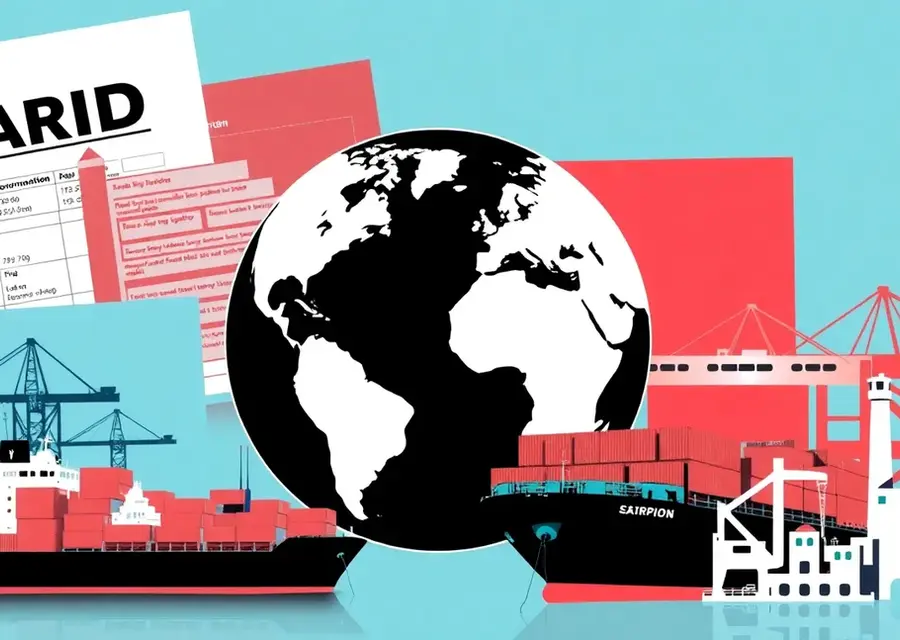US Trade Tariffs: Impacts, Exemptions, and Global Markets
- THE MAG POST

- Sep 7
- 4 min read

Rethinking Tariff Exemptions and Their Economic Purpose
Tariff exemptions are not mere loopholes; they encode strategic compromises between domestic protection and global competitiveness.
How exemptions rewire incentives
Exemptions create selective price relief for specific imports, which can tilt supplier choices toward countries or firms that align with national goals. When critical inputs escape levies, manufacturers recalibrate sourcing networks, often prioritizing reliability and proximity over the cheapest unit cost, reshaping regional trade patterns.
Businesses also reassess capital allocation, favoring suppliers with resilient backup plans and diversified sourcing. Exemptions can reduce marginal costs, but they raise strategic questions about governance, accountability, and the risk that exemptions become a bargaining chip rather than a fixed policy, prone to political renegotiation and drift, again and again.
Costs and benefits for different actors
Producers in protected sectors may enjoy steadier margins when exemptions blunt import pressures, yet they also face a chilling effect as foreign competitors pivot to carve out new niches. Consumers may gain lower prices for select goods, while broader price pressures mount elsewhere from unintended distortions.
Policy makers then weigh fiscal costs against strategic gains, often trading short term revenue losses for long term industrial capability. The challenging balance across agencies underscores why exemptions attract intense scrutiny, and why credible sunset clauses become essential tools to prevent drift and ensure accountability.
Policy mechanics in a turbulent era
Policy mechanics in a turbulent era reveal how exemptions are negotiated and implemented across agencies.
Tariffs as a regulatory tool
Tariffs function as a pressure point to shift behavior; exemptions mute that pressure for chosen imports while preserving leverage elsewhere. The design choice shapes manufacturing footprints, influences capital investment, and interacts with reciprocal measures in partner economies, highlighting the interplay between domestic logic and global reciprocity.
Executives and economists scrutinize governance structures to ensure exemptions remain transparent, are periodically re-evaluated, and align with broader macroeconomic objectives rather than narrow political wins, because credibility hinges on predictable application and sunset discipline and robust oversight mechanisms within agencies.
Ex ante vs ex post: forecasting effects
The timing of exemptions matters for planning and risk management. Firms forecast scenarios, adjust inventories, and build contingency plans when exemptions are uncertain or subject to revision. Governments track macro indicators to calibrate exemptions against unemployment, inflation, and innovation trends, seeking balance rather than blunt advantage.
Analysts stress that transparent criteria and independent reviews reduce volatility, helping markets distinguish policy signals from political noise, which in turn supports investment and regional development across diverse sectors and regions.
Distributional effects and strategic responses
Distributional effects and strategic responses illustrate the varied footprints of exemptions across sectors and regions.
Who gains and who pays
Exporters in supply chain hubs may gain new market access, while domestic producers facing competition from exempted imports face heightened cost scrutiny. Workers in adjusting industries experience transitional benefits, yet long run labor-market shifts depend on retraining programs and regional investment climate, not merely policy timing.
Governments respond with targeted incentives or compensatory funds that smooth transitions, while researchers assess net effect on inequality and regional growth, emphasizing that well designed exemptions can reduce harms if paired with active labor market policies and transparent reporting and sunset reviews.
Corporate strategy and government coordination
Firms pursue hedging strategies, diversify suppliers, and invest in automation to withstand uneven tariff shields. Governments synchronize with allies to avert retaliatory spirals, while multilateral fora test rules that prevent abuse and ensure that exemptions serve broader economic resilience rather than isolated advantage.
Policy scholars remind us that coordination requires credible benchmarks, public communication, and adaptive implementation so that exemptions contribute to growth and not to winners-take-all dynamics that undermine trust in trade governance.
Policy design for resilience in a connected world
Policy design for resilience demands clarity, flexibility, and coordination with allies.
Diversification as defense
Diversification reduces risk by broadening supplier bases and markets, yet it requires upfront investment, logistics sophistication, and supplier auditing. The incentive to diversify grows when exemptions or tariff shields carve uneven protection, inviting firms to rethink regional specialization and invest in digital procurement capabilities.
Diplomacy and enforcement must keep pace with evolving technology and enforcement tools, ensuring that rules are enforceable, fair, and capable of deterring abuse without stalling legitimate commerce. This balance requires transparent criteria, independent review, and periodic recalibration based on measurable outcomes and stakeholder feedback within agencies.
Diplomacy and enforcement in a connected economy
Diplomacy and enforcement must keep pace with evolving technology and enforcement tools, ensuring that rules are enforceable, fair, and capable of deterring abuse without stalling legitimate commerce. This balance requires transparent criteria, independent review, and periodic recalibration based on measurable outcomes and stakeholder feedback within agencies.
As global markets evolve, policy teams stress contingency planning, cross-border cooperation, and rapid adjustments to tariff frameworks to minimize disruption while preserving strategic aims across partners and sectors.
Key Takeaways
Economic implications
Exemptions recalibrate cost structures for select imports, potentially lowering consumer prices on chosen goods while shifting burdens elsewhere. The net effect depends on how well markets adapt through diversification, investment, and productivity gains that outpace any short-term revenue gaps in the medium term.
Policymakers should couple exemptions with credible sunset clauses, transparent reporting, and active labor-market programs to sustain growth, reduce inequality, and preserve international credibility that supports long term investment and innovation in a connected economy that benefits many stakeholders.
Policy recommendations
Effective frameworks combine disciplined evaluation, stakeholder engagement, and flexible implementation that can adjust to evolving global tensions. When exemptions are designed with performance benchmarks, they become tools for resilience rather than political conveniences and measurable sunset reviews within transparent oversight.
Finally, transparent communication with businesses and workers, plus international partners, helps everyone anticipate change and respond constructively, turning policy complexity into a shared plan for sustainable growth that aligns with public interest across economies and regions.






















































Comments